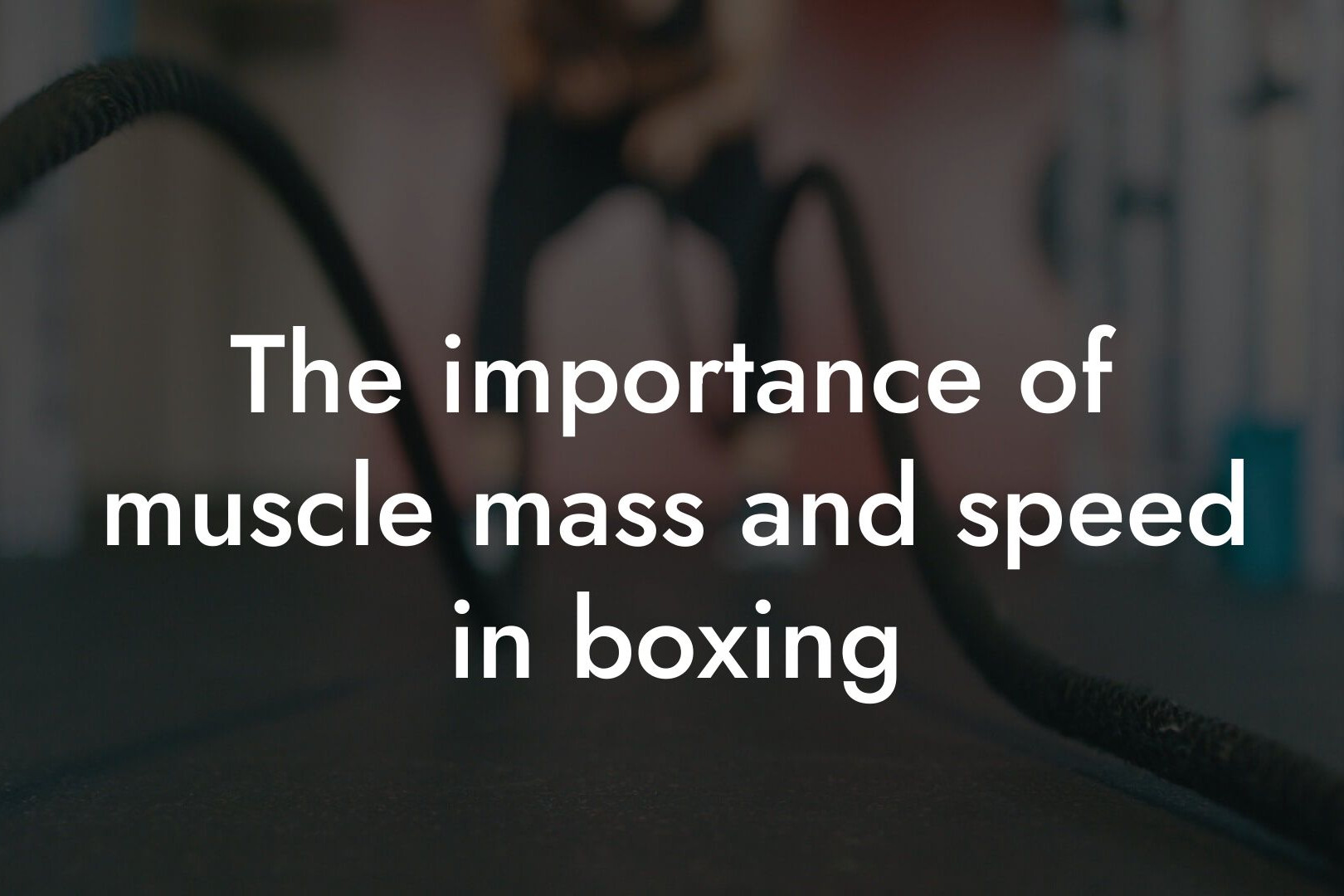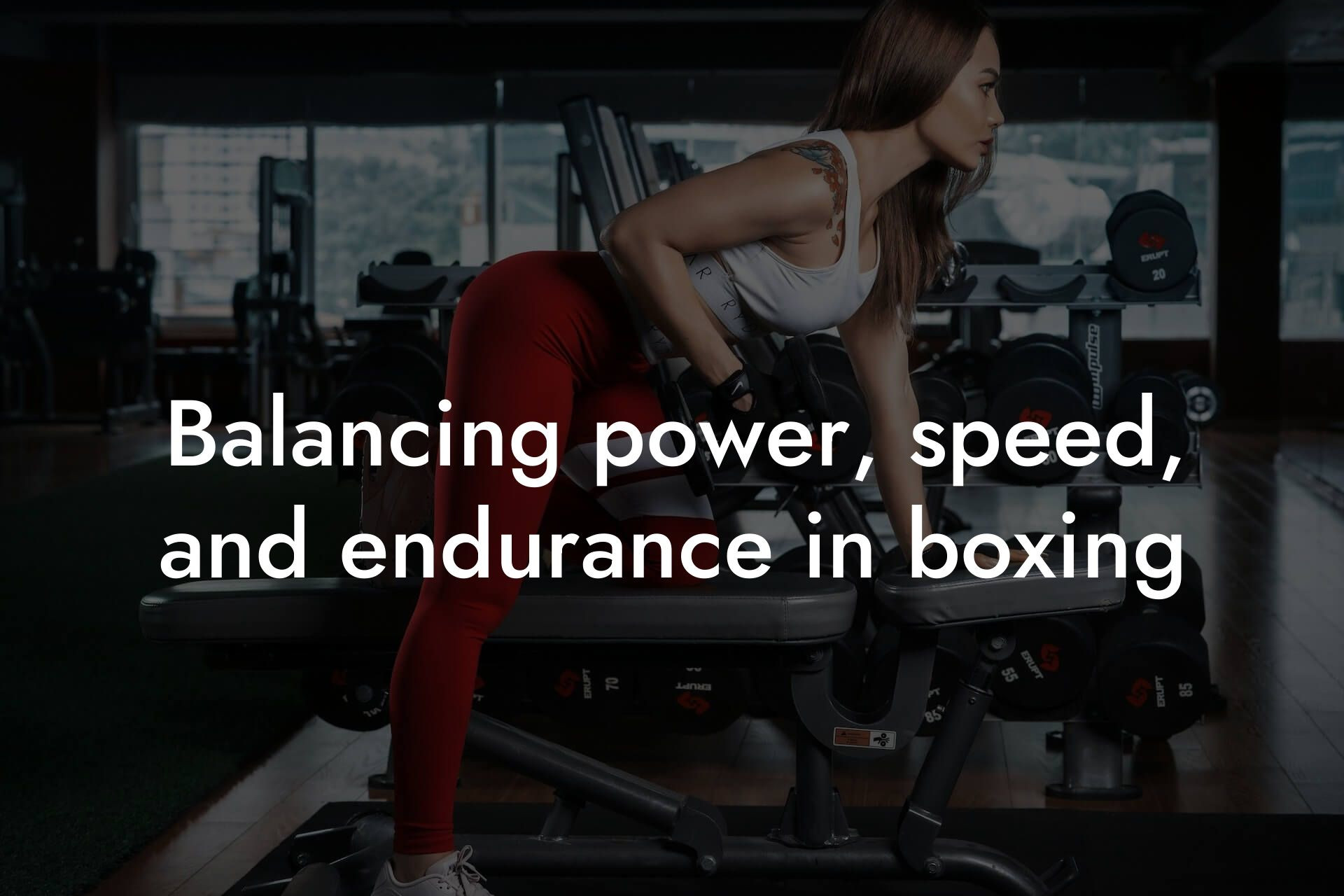As a high-earning professional, you understand the importance of maintaining a strong physical appearance, especially in a demanding sport like boxing. Your body composition plays a crucial role in your performance, and having a deep understanding of this complex relationship can give you a competitive edge. In this article, we'll delve into the world of body composition and its impact on boxing performance, providing you with the knowledge you need to take your skills to the next level.
Table of Contents
- The Importance of Body Composition in Boxing
- Body Fat Percentage and Boxing Performance
- Muscle Mass and Its Role in Boxing
- Bone Density and Its Impact on Boxing
- How to Assess Body Composition for Boxing
- Nutrition and Training Strategies for Optimal Body Composition
- Common Body Composition Mistakes in Boxing
- Frequently Asked Questions
The Importance of Body Composition in Boxing
In boxing, having the right body composition is essential for optimal performance. Your body fat percentage, muscle mass, and bone density all contribute to your overall power, speed, agility, and endurance. A well-balanced body composition enables you to move efficiently, generate maximum force, and withstand the physical demands of the sport. Conversely, an imbalanced body composition can lead to decreased performance, increased risk of injury, and a higher likelihood of fatigue.
Body Fat Percentage and Boxing Performance
Body fat percentage is a critical aspect of body composition in boxing. Excess body fat can hinder your performance in several ways. Firstly, it increases your overall weight, making it more difficult to move quickly and efficiently around the ring. Secondly, excess body fat can reduce your power and speed, as your muscles have to work harder to generate force. Finally, high body fat percentage can increase your risk of injury, particularly in the joints and muscles. Ideally, boxers should aim to maintain a body fat percentage between 8-12% for optimal performance.
Muscle Mass and Its Role in Boxing
Muscle mass is another vital component of body composition in boxing. Having sufficient muscle mass enables you to generate maximum force, power, and speed. A well-developed muscular system also helps to improve your endurance and resilience, allowing you to withstand the physical demands of the sport. In particular, boxers need strong core muscles, legs, and upper body muscles to execute punches, blocks, and evasive maneuvers effectively. Aiming to maintain a lean muscle mass of around 40-50% of your total body weight is ideal for optimal boxing performance.
Bone Density and Its Impact on Boxing
Bone density is often overlooked in the context of body composition, but it plays a critical role in boxing performance. Having strong, dense bones enables you to withstand the impact of punches and reduce your risk of injury. In particular, boxers need strong bones in their hands, wrists, and skull to absorb the shock of punches and minimize the risk of fractures. Aiming to maintain a healthy bone density through a balanced diet, regular exercise, and adequate vitamin D and calcium intake is essential for optimal boxing performance.
How to Assess Body Composition for Boxing
Accurately assessing your body composition is crucial for identifying areas for improvement and tracking your progress. There are several methods to assess body composition, including skinfold measurements, bioelectrical impedance analysis (BIA), and dual-energy X-ray absorptiometry (DEXA). DEXA scans, in particular, provide a highly accurate and detailed assessment of body composition, including bone density, muscle mass, and body fat percentage. At Tano Performance Group, we use state-of-the-art DEXA machines to provide our clients with a comprehensive body assessment, empowering them to make informed decisions about their training and nutrition.
Nutrition and Training Strategies for Optimal Body Composition
To achieve optimal body composition for boxing, you need to focus on a balanced diet and training regimen. Aiming to consume a high-protein diet rich in lean meats, fish, and plant-based sources can help you build and maintain muscle mass. Additionally, incorporating strength and conditioning exercises into your training routine can help improve your power, speed, and endurance. It's also essential to prioritize rest and recovery, as adequate sleep and nutrition are critical for muscle growth and repair.
Common Body Composition Mistakes in Boxing
Many boxers make common mistakes when it comes to body composition, which can hinder their performance and increase their risk of injury. One of the most common mistakes is neglecting to monitor and adjust their body fat percentage, leading to decreased power and speed. Another mistake is focusing too much on building muscle mass, without considering the importance of bone density and body fat percentage. Finally, some boxers may neglect to prioritize rest and recovery, leading to muscle fatigue and decreased performance.
In conclusion, body composition plays a critical role in boxing performance. By understanding the importance of body fat percentage, muscle mass, and bone density, you can optimize your training and nutrition to achieve peak performance. At Tano Performance Group, we're committed to helping high-earning professionals like you achieve their physical goals through our comprehensive body assessment services. By working together, we can help you unlock your full potential and take your boxing skills to the next level.
Frequently Asked Questions
What is body composition, and how does it relate to boxing performance?
Body composition refers to the proportion of fat and lean mass in the body. In boxing, having an optimal body composition is crucial for performance, as it affects power, speed, agility, and endurance. A boxer with a high percentage of lean mass and low body fat will generally have an advantage over an opponent with a higher body fat percentage.
How does body fat percentage impact a boxer's performance?
A higher body fat percentage can hinder a boxer's performance by reducing their power, speed, and agility. Excess body fat can also increase the risk of injury and decrease endurance. On the other hand, a low body fat percentage can improve a boxer's overall performance, allowing them to move quickly and efficiently around the ring.
What is the ideal body fat percentage for a boxer?
The ideal body fat percentage for a boxer varies depending on the individual and their weight class. Generally, a body fat percentage between 8-12% is considered optimal for male boxers, while female boxers aim for a body fat percentage between 16-20%.
How does muscle mass impact a boxer's performance?
Muscle mass is essential for generating power and speed in boxing. A boxer with a high amount of muscle mass will be able to throw more powerful punches and maintain their energy levels throughout the fight. Additionally, muscle mass helps to improve bone density, reducing the risk of injury.
What is the importance of bone density in boxing?
Bone density is crucial in boxing, as it helps to reduce the risk of injury. A boxer with high bone density will be less likely to suffer from fractures or breaks, allowing them to withstand the physical demands of the sport.
How does body composition affect a boxer's endurance?
A boxer's body composition has a significant impact on their endurance. A boxer with a high percentage of lean mass and low body fat will be able to maintain their energy levels throughout the fight, whereas a boxer with a higher body fat percentage may tire more easily.
What role does nutrition play in maintaining optimal body composition for boxing?
Nutrition plays a critical role in maintaining optimal body composition for boxing. A boxer's diet should be tailored to their individual needs, with a focus on consuming lean protein, complex carbohydrates, and healthy fats. A well-planned diet can help a boxer achieve and maintain their ideal body composition.
How does hydration impact body composition and performance in boxing?
Hydration is essential for maintaining optimal body composition and performance in boxing. Adequate hydration helps to regulate body temperature, transport nutrients and oxygen to the muscles, and remove waste products. Even mild dehydration can negatively impact a boxer's performance.
What is the relationship between body composition and recovery in boxing?
A boxer's body composition has a significant impact on their recovery. A boxer with a high percentage of lean mass and low body fat will generally recover faster and more efficiently than a boxer with a higher body fat percentage. This is because lean mass helps to reduce inflammation and promote muscle repair.
How can a boxer measure their body composition?
There are several ways for a boxer to measure their body composition, including skinfold measurements, bioelectrical impedance analysis (BIA), and dual-energy X-ray absorptiometry (DXA). A qualified healthcare professional or sports dietitian can help a boxer determine the best method for their individual needs.
What are the risks of rapid weight loss in boxing?
Rapid weight loss can be detrimental to a boxer's health and performance. It can lead to dehydration, electrolyte imbalances, and a loss of lean mass, ultimately negatively impacting a boxer's power, speed, and endurance.
How can a boxer maintain their weight class while still achieving optimal body composition?
A boxer can maintain their weight class while still achieving optimal body composition by focusing on gradual weight loss and muscle gain. This can be achieved through a combination of proper nutrition, hydration, and training.
What is the importance of periodized training in achieving optimal body composition for boxing?
Periodized training is essential for achieving optimal body composition for boxing. By varying the intensity and volume of training, a boxer can avoid plateaus and continue to make progress towards their goals.
How does sleep impact body composition and performance in boxing?
Sleep is critical for body composition and performance in boxing. During sleep, the body repairs and rebuilds muscle tissue, helping to promote muscle growth and recovery. Adequate sleep is essential for a boxer to perform at their best.
What is the role of stress management in achieving optimal body composition for boxing?
Stress management is essential for achieving optimal body composition for boxing. Chronic stress can lead to increased cortisol levels, which can negatively impact body composition and performance. A boxer should prioritize stress management techniques, such as meditation and deep breathing, to maintain optimal body composition.
How can a boxer use visualization techniques to improve their performance and body composition?
Visualization techniques can be a powerful tool for a boxer to improve their performance and body composition. By visualizing themselves achieving their goals, a boxer can increase their motivation and confidence, ultimately leading to improved performance and body composition.
What is the importance of flexibility and mobility in achieving optimal body composition for boxing?
Flexibility and mobility are essential for achieving optimal body composition for boxing. A boxer with good flexibility and mobility will be able to move more efficiently and effectively, reducing their risk of injury and improving their overall performance.
How can a boxer incorporate strength training into their program to improve body composition?
A boxer can incorporate strength training into their program to improve body composition by focusing on exercises that target multiple muscle groups at once. This can include exercises such as squats, deadlifts, and bench press.
What is the role of plyometrics in improving body composition and performance in boxing?
Plyometrics, such as jump squats and box jumps, can be an effective way for a boxer to improve their power and explosiveness. By incorporating plyometrics into their training program, a boxer can improve their body composition and overall performance.
How can a boxer use cardio exercises to improve their endurance and body composition?
A boxer can use cardio exercises, such as running and jumping rope, to improve their endurance and body composition. By incorporating cardio exercises into their training program, a boxer can increase their stamina and reduce their body fat percentage.
What is the importance of active recovery in maintaining optimal body composition for boxing?
Active recovery is essential for maintaining optimal body composition for boxing. By incorporating low-intensity activities, such as yoga and stretching, into their training program, a boxer can promote muscle recovery and reduce their risk of injury.
How can a boxer work with a sports dietitian to achieve optimal body composition?
A boxer can work with a sports dietitian to achieve optimal body composition by receiving personalized nutrition guidance and support. A sports dietitian can help a boxer develop a tailored meal plan and provide ongoing support to ensure they achieve their goals.
What are the benefits of working with a strength and conditioning coach to improve body composition and performance in boxing?
Working with a strength and conditioning coach can be highly beneficial for a boxer looking to improve their body composition and performance. A strength and conditioning coach can provide personalized guidance and support, helping a boxer to develop a tailored training program that meets their individual needs.
How can a boxer track their progress and adjust their training program accordingly?
A boxer can track their progress by regularly monitoring their body composition, performance, and overall health. By tracking their progress, a boxer can identify areas for improvement and make adjustments to their training program as needed.
Here are some related articles you might love...
- The importance of muscle mass and speed in boxing
- Bone density and injury prevention in boxing
- Balancing power, speed, and endurance in boxing
- Strength and conditioning programs for amateur boxers
- Reducing body fat for optimal weight class in boxing
- Nutrition tips for maintaining energy and muscle in boxing
- Off-season training for amateur boxers
- Recovery strategies for boxers after sparring sessions
- The role of DEXA scans in boxing training and weight management
Zak Faulkner
Zak Faulkner is a leading authority in the realm of physical health and body composition analysis, with over 15 years of experience helping professionals optimise their fitness and well-being. As one the experts behind Tano Performance Group, Zak has dedicated his career to providing in-depth, science-backed insights that empower clients to elevate their physical performance and overall health.
With extensive knowledge of DEXA technology, Zak specializes in delivering comprehensive body assessments that offer precise data on body fat, muscle mass, bone density, and overall physique. His expertise enables individuals to make informed decisions and achieve their fitness goals with accuracy and confidence. Zak’s approach is rooted in a deep understanding of human physiology, combined with a passion for helping clients unlock their full potential through personalised strategies.
Over the years, Zak has earned a reputation for his commitment to excellence, precision, and client-focused service. His guidance is trusted by top professionals who demand the best when it comes to their health. Whether advising on fitness programs, nutritional strategies, or long-term wellness plans, Zak Faulkner’s insights are a valuable resource for anyone serious about taking their health and fitness to the next level.
At Tano Performance Group, Zak continues to lead our Content Team revolutionising how professionals approach their physical health, offering unparalleled expertise that drives real results.




